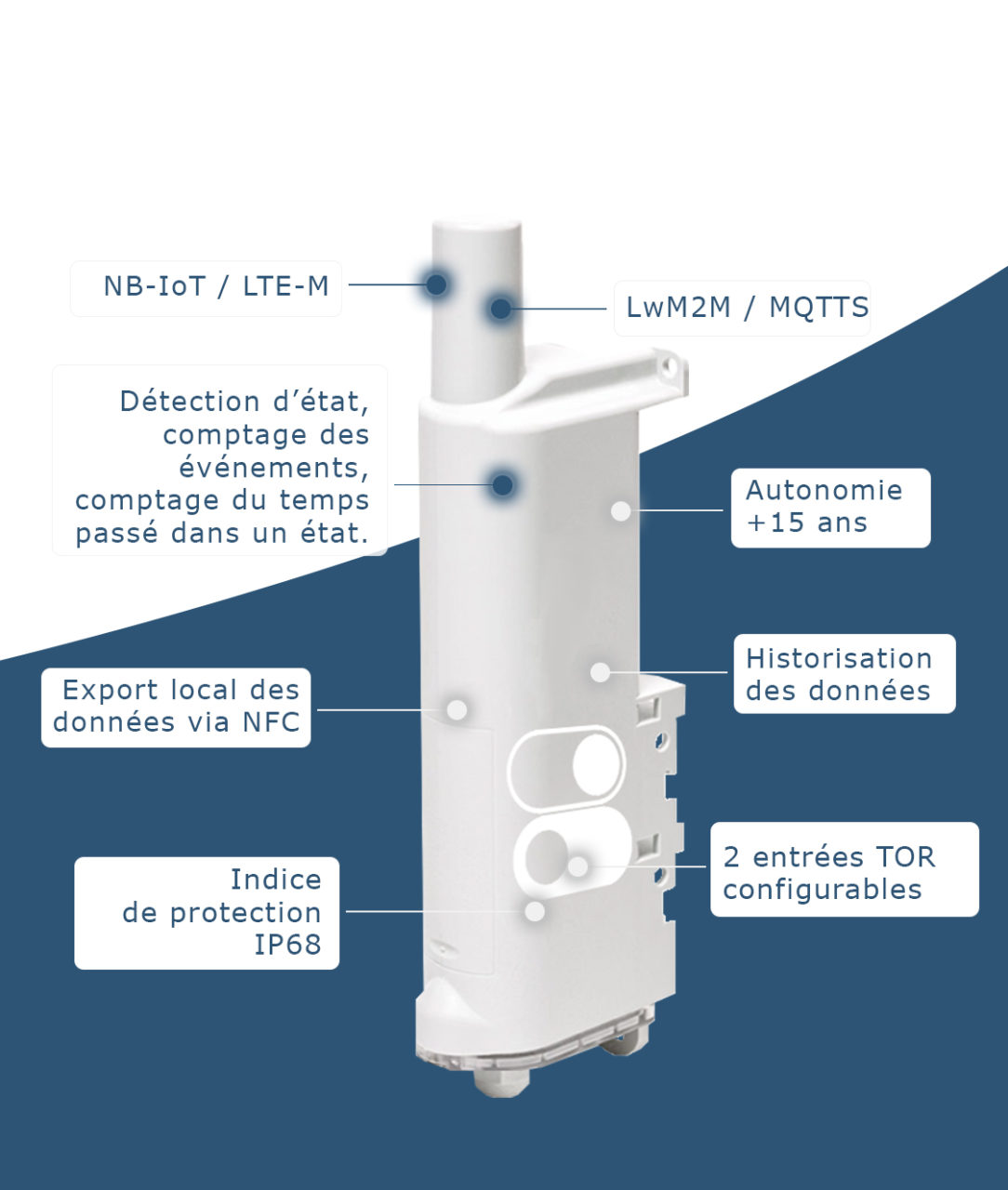Where and how to decode my data?
This article focuses on the so-called “Data Management”. Before the data can actually be used and processed, there are some previous steps that need to be followed . We will talk here about decoding the data, in particular.
To fully understand what’s at stake here, let’s have a look at the IoT communication chain: collection, transmission, reliability, operation:
CHALLENGE
Current LPWAN technologies such as Sigfox or LoRaWAN do not have interoperability standards for data. This means that, device makers are free to set up their own encoding solution.
For example: a temperature can be coded on 1 byte with a range value from 0 to 255°C but can also be coded on 2 bytes with a different unit to cover a larger range, to achieve a better precision or to include negative temperatures.
This is where the decoding part is key as it’s about transforming a raw data frame into exploitable data according to the rules defined by the manufacturer. We understand immediately the significant workload for those who want to integrate multiple sensors from different device makers.
POSSIBLE STRATEGIES
Several strategies can be used to reach this goal:
- Decoding the data directly on the network operator’s servers,
- Decoding the data at the end of the IoT chain, on the customer application.
Today, most public or private network operators
have understood this challenge and offer their customers to send them the decoded data instead of the raw frame. To do so, they provide the “CODECs” (the common name given to computer programs that decode data) to all of their customers. For them, the challenge is to maintain this additional service towards the increase in the number of products to be decoded per manufacturer.
However, some customers use multiple networks or do not want their data to be decoded on a third-party server. They will therefore prefer a decoding solution on their own platform. Again, some IoT platform providers have created CODECs libraries so their customers have direct access to useful information.
Finally, there is a third, very specific and more complex development option that consists of keeping the data locally, implementing CODECs directly in a single-gateway private network. This solution meets the needs of users that have high expectations regarding security and accessibility of their data.
IN CONCLUSION
Decoding data is a key step on the customers’ IoT journey.
Before buying a device, it is important to make sure that the device maker:
- Gives all necessary information regarding the decoding of the frames,
- Provides tools or services to help you on this topic,
- Is well-referenced by a large number of network operators and platform providers.


